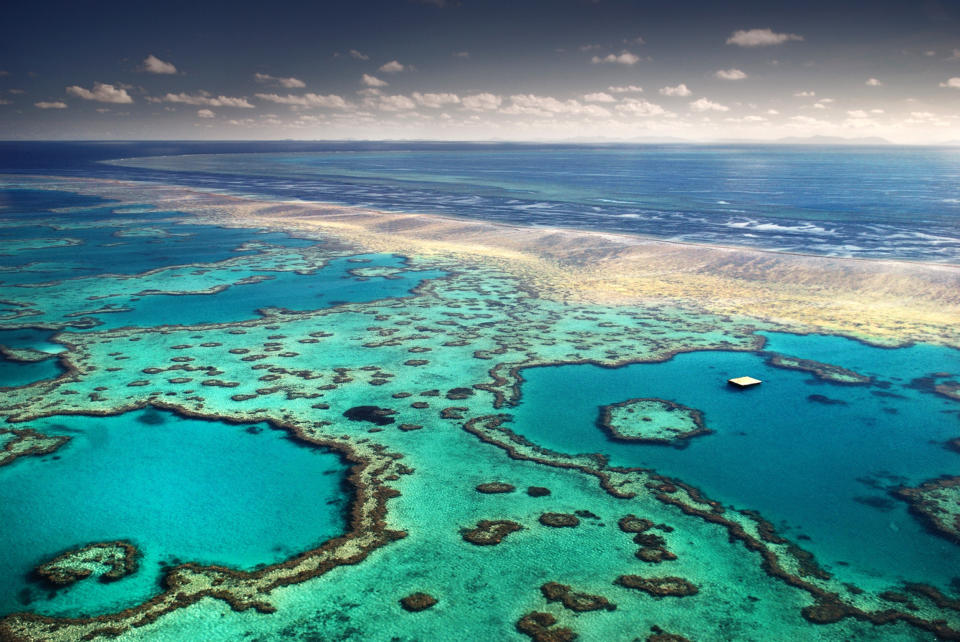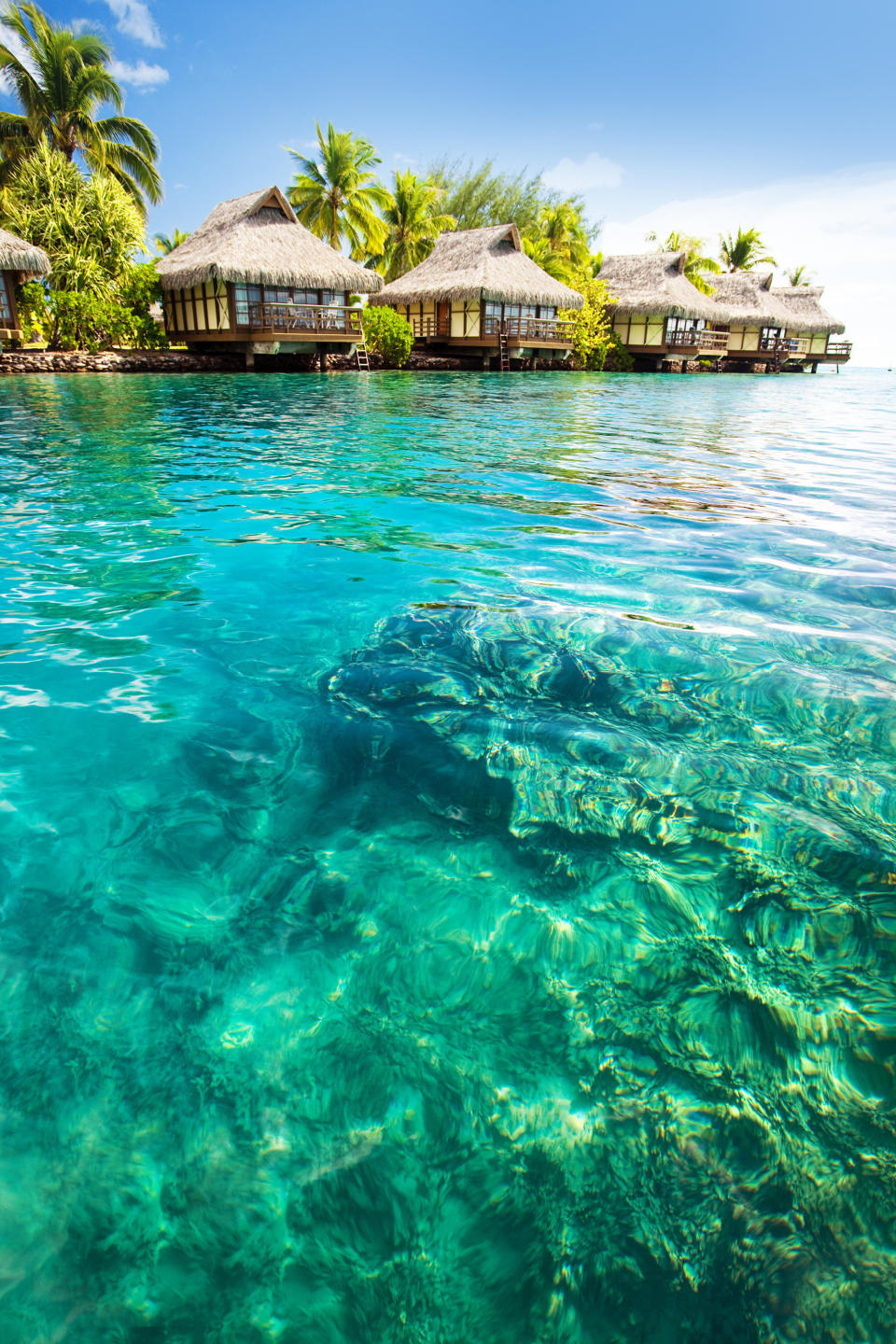Senators Not Backing Green New Deal Received On Average 7 Times As Much Fossil Fuel Cash
The 12 senators co-sponsoring the Green New Deal resolution that Sen. Ed Markey (D-Mass.) unveiled earlier this month have accepted nearly $1.1 million from oil, gas and coal companies since entering Congress.
But the 88 senators who have declined to support the measure have collected far more from those industries ― close to $59 million, according to nonprofit Oil Change USA, which analyzed 30 years of data. That comes out to about $670,000 per nonbacker, or more than 7 times what the average sponsor took in.
The disparity illustrates what advocates say is a glaring conflict of interest for lawmakers deciding how to move forward on the only proposal yet to emerge that matches the scale of the climate crisis. The donations come from the powerful, deep-pocketed industry with the most to lose from any policy that restricts the sources of planet-warming emissions.
“The Green New Deal shows the level of ambition that climate and energy policy could have if Big Oil, Gas, and Coal’s grip on Washington were weakened,” David Turnbull, a spokesman for Oil Change USA, said in an email. “The cosponsors of the Green New Deal have by and large bucked the influence of the out-of-control fossil fuel industry, and that shows in their willingness to stand up for bold climate solutions like what we see in the Green New Deal resolutions.”
The Green New Deal resolution, jointly released with Rep. Alexandria Ocasio-Cortez (D-N.Y.), proposes an outline for future legislation that could radically reshape the U.S. economy by aggressively working to phase out fossil fuels and expand access to high-wage jobs, union representation and health care to millions of Americans. The resolution quickly gained more than 70 co-sponsors in the House and a dozen in the Senate, and signaled a dramatic shift in the way climate policy is framed for voters.
The Green New Deal seeks to deploy the entire U.S. economy to build lots of renewable electricity infrastructure and repair roads, bridges and seawalls to withstand extreme weather ― the kind of mobilization of resources that the U.S. has not seen since World War II.
The data on fossil fuel donations come from publicly available filings dating as far back as 1989, compiled by the nonpartisan Center for Responsive Politics. They include donations from both corporate political action committees and individuals who gave $200 or more.
Between 1989 and 2018, Sen. Ron Wyden (D-Ore.) accepted the most of any Green New Deal sponsors, with lifetime contributions of $290,487 from the oil and gas industry, and $2,500 from the coal mining sector. Markey came in second, with $154,891 from oil and gas, but zero from coal. Sens. Kirsten Gillibrand (D-N.Y.) and Bernie Sanders (I-Vt.) ― both of whom are running for the Democratic nomination for president in 2020 ― ranked third and fourth, with Gillibrand taking $128,376 from oil and gas and none from coal, and Sanders accepting $123,975 from oil and gas and $4,280 from coal.

There are nuances to the numbers. Over the past two years, Markey and Sanders each took the No Fossil Fuel Pledge, an oath overseen by Oil Change USA and others, committing candidates to reject PAC money and donations over $200. Sanders’ donations overwhelmingly came from individual donors, with corporate PACs making up just $311,004 of the donations he’s received since 1989.
Fossil fuel donations overwhelmingly favor Republicans, who received nearly $47 million of the $52.3 million the oil and gas industry gave out in campaign contributions to current senators.
Senate Majority Leader Mitch McConnell (R-Ky.) vowed last week to hold a vote on the Green New Deal resolution in an apparent bid to torpedo the movement behind the proposal. The Kentucky senator has received nearly $3.1 million from fossil fuel donors throughout his career as a federal lawmaker. He ranks fourth behind Sens. Mitt Romney (R-Utah), John Cornyn (R-Texas) and Ted Cruz (R-Texas), the all-time top recipients of oil and gas money in the sitting Senate.
The future of the Green New Deal resolution is less clear in the House, where Democrats command a majority. But the gap in fossil fuel donations between co-sponsors and opponents is nearly as large as it is in the Senate.
The Green New Deal’s 85 co-sponsors in the House accepted a total of $2.2 million from oil and gas contributors and $24,250 from the coal industry. The other 350 House members accepted nearly $50 million from oil and gas and $5.1 million from coal.
The donations come as the fossil fuel industry and other opponents of the Green New Deal’s decarbonization goals are rallying against the resolution.
On Monday, the U.S. Chamber of Commerce ― the corporate lobby abandoned by some of the world’s largest companies over its vehement rejection of the realities of climate change ― published a blog post from its president, Thomas Donohue, calling the Green New Deal “a Trojan Horse for socialism.” On Tuesday, E&E News reported that disgraced lobbyist Jack Abramoff is now fundraising for a new dark-money group aimed at supporting candidates who oppose a Green New Deal.
Yet no opponent of the Green New Deal has proposed a policy that could conceivably decrease emissions enough to keep global warming from soaring beyond 2.7 degrees Fahrenheit, at which point scientists say the damage from climate change could exceed $54 trillion.
Clarification: This story has been updated to note that Oil Change USA, not Oil Change International, analyzed the data on oil and gas industry donations.
Related Coverage
McConnell Trolls Democrats By Pledging A Vote On The Green New Deal
Green New Deal Activists Shift Focus To Vulnerable Republicans Ahead Of Senate Vote
Likely 2020 Voters Support Parts Of Green New Deal, Despite Reservations Over The Cost
Also on HuffPost
Love HuffPost? Become a founding member of HuffPost Plus today.
Alaska

Venice

Antarctica

The Great Barrier Reef

The Himalayas

The Maldives

The Alps

The Arctic

Micronesia and Polynesia

This article originally appeared on HuffPost.

